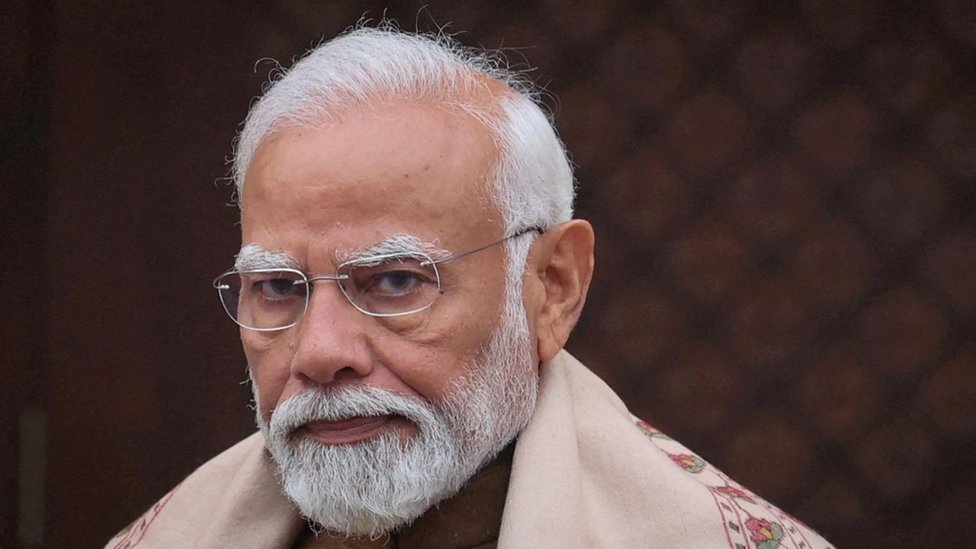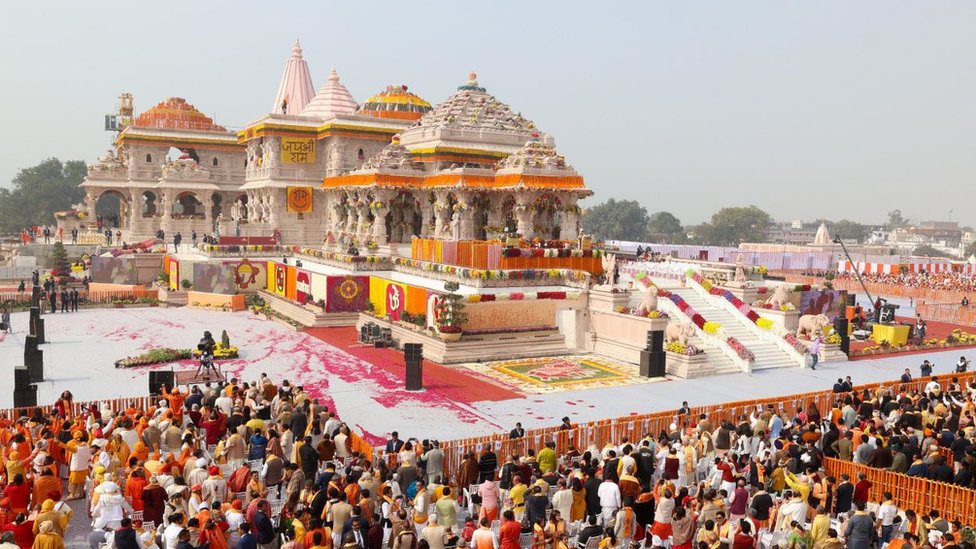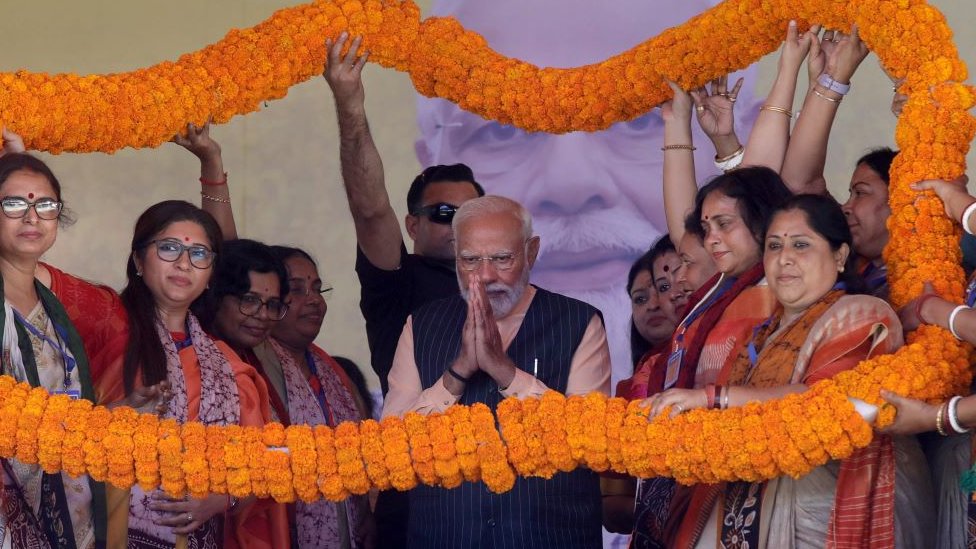India Election 2024: What you need to know about Narendra Modi
- Published
A quick guide to Narendra Modi

As millions of Indians head to the polls in this historic election year, here's what you need to know about Prime Minister Narendra Modi.
From a small town to the seat of power in Delhi
Narendra Modi’s humble beginnings in Gujarat state didn’t limit his ambition. He joined politics in his twenties, and rose through the ranks of the Hindu nationalist Bharatiya Janata Party (BJP).
In 2001, he became the chief minister of his home state, then in 2014 he was elected prime minister of India. After almost a decade in power, his popularity has only increased, with analysts saying he’s likely to win a third term.
His Hindu nationalism has struck a chord

Mr Modi’s visits to important Hindu temples are often broadcast by the media, which energises his supporters. However, Muslim groups say they often face discrimination and attacks, and have been forced to live as "second-class" citizens under Mr Modi's rule - an allegation the BJP denies.
In January, Mr Modi opened the Ram Temple in Ayodhya. Millions of Hindus supported the construction, which is said to mark the birthplace of Lord Ram. It is built at a site where a mosque once stood, before it was torn down by right-wing groups in 1992.
He has crafted an image as a world leader

He is known for forging close ties with world leaders, including US President Joe Biden and UK Prime Minister Rishi Sunak. His biggest moment on the world stage arrived when he hosted the G20 summit in Delhi last year, where he emerged as the voice of the developing world.
Analysts say he has worked just as hard on his popularity in India, opening massive developmental projects, holding energetic roadshows and participating in unusual publicity campaigns - one even saw him snorkel in the sea to promote a development project.
His popularity has helped the BJP’s success
Political observers say his charisma, coupled with welfare schemes and a publicity blitz, has helped the party win successive general elections. This is despite criticisms around the rising rate of unemployment - especially among the young - and increasing prices.
Even with these cracks, the opposition hasn’t been able to halt Mr Modi’s popularity. Partly, they say, this is because of attempts to silence or attack critics of the government. Mr Modi and his party have denied these allegations.
He is known for his ‘masterstrokes’
Some of his appeal has been credited to what media have dubbed his “masterstroke” moves – and their timing.
Just before the 2019 election, PM Modi sent fighter jets inside Pakistani territory in response to a deadly militant attack in Indian-administered Kashmir. Soon after, nationalism became a major theme in the party's election strategy.
Observers are now wondering if resurrecting a controversial citizenship law could be 2024’s masterstroke. It offers amnesty to non-Muslim illegal immigrants from neighbouring countries, with Mr Modi's government saying it gives sanctuary to people fleeing religious persecution. But critics say the law is anti-Muslim.
He remains a divisive figure

Mr Modi’s supporters say that he is the prime minister India needs. They point to his government’s developmental projects and welfare schemes, including providing free food grains, building toilets, and opening bank accounts for millions.
But his critics say that his government has clamped down on dissent, favours the rich and that under him, there has been a rise in violence against Muslims and other minorities.
Produced by Text Formats. Image Credits: Reuters/PMO/Shutterstock